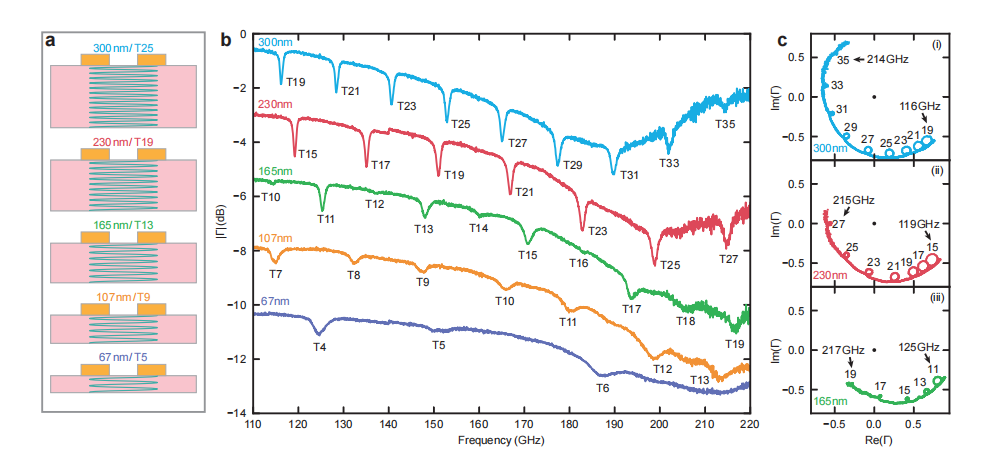
This paper focuses on advancing electromechanical resonators to terahertz (THz) frequencies for phononic signal processing, particularly in the field of quantum phononics. The authors aim to address challenges related to electrical actuation and detection of mechanical motion at these high frequencies, particularly the miniaturization required to support acoustic waves with nanometer-scale wavelengths.
Key points include:
Terahertz Nanomechanics: The paper explores how terahertz frequencies offer vast bandwidths and can enable quantum mechanical resonators to remain in their ground state even at standard kelvin temperatures, unlike GHz resonators that typically require cooling to millikelvin temperatures.
Fabrication of Ultrathin Films: The authors reduced the thickness of lithium niobate films from 300 nm to 67 nm to create suspended Lamb-wave resonators. This was done through several stages to assess the relationship between resonator performance and film thickness. The devices achieved resonant frequencies up to 220 GHz, a significant advancement towards the terahertz frequency threshold.
Surface Losses and Acoustic Performance: While ultrathin films provide a clear advantage in frequency scaling, they also suffer from increased acoustic losses. The study suggests that future progress will depend on mitigating surface defects in films thinner than 100 nm, which contribute to these losses.
Resonator Design and Measurements: The authors fabricated devices with varying thicknesses of lithium niobate and measured their mechanical quality factors (Q factors) and frequency responses. The results showed that thinner films, while achieving higher frequencies, also experienced lower Q values due to increased surface damage and fabrication challenges.
Future Directions: The paper highlights the need for advanced fabrication techniques to reduce surface defects, such as chemical mechanical polishing (CMP) and atomic layer deposition (ALD), which could enhance the performance of terahertz nanomechanical resonators.
In conclusion, this work pushes the boundary of terahertz nanomechanics by demonstrating the fabrication of resonators operating at frequencies up to 220 GHz, offering valuable insights into improving device performance and unlocking the potential for THz-based sensing, communication, and quantum technologies.
OMeda (Shanghai Omedasemi Co.,Ltd) was founded in 2021 by 3 doctors with more than 10 years of experience in nanpfabrication. It currently has 15 employees and has rich experience in nanofabrication (coating, lithography, etching, two-photon printing, bonding) and other processes. We support nanofabrication of 4/6/8-inch wafers.